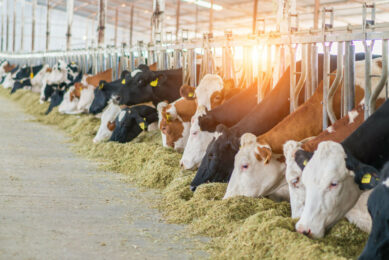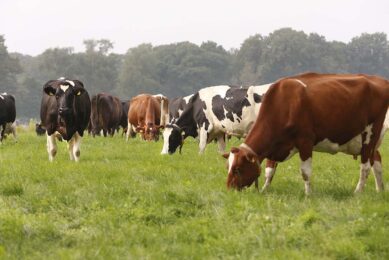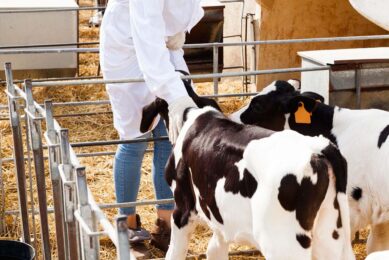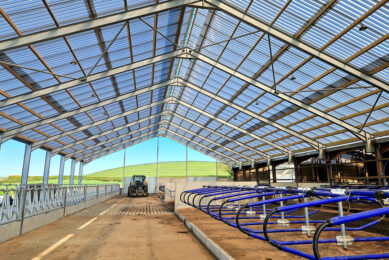Ins and outs of farm facilities and equipment
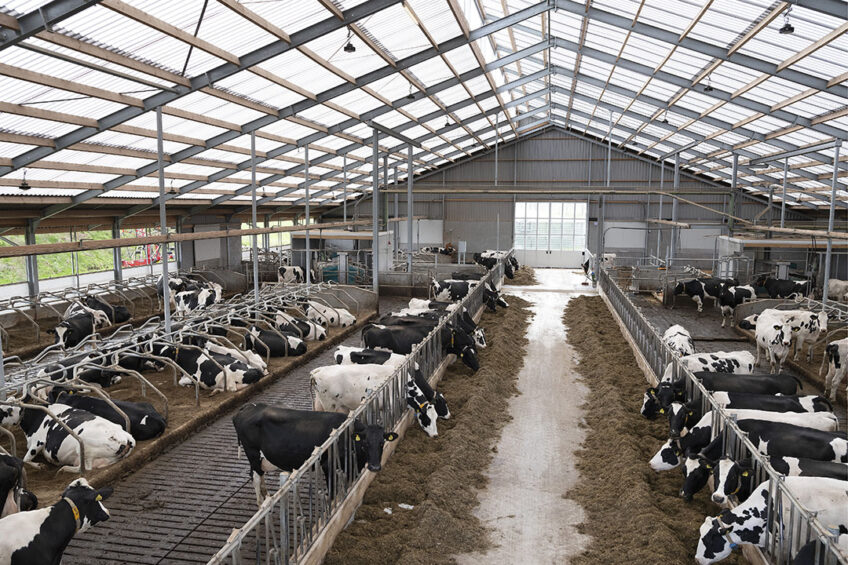
Farm facilities and equipment should be properly selected and managed to make the most of them in functional and economic terms.
Here we consider the most commonly used facilities and equipment and the benefits of managing them properly for improved animal health and production.

Feeding facilities
Competition among dairy cattle for feed space may cause stress, production losses and health issues. The provision of an adequate feed space (70–75 centimetres per cow) can help alleviate these problems. Also, the feed table surface needs to be easy to clean and keep clean. It should be noted that silage is an acidic feed and will erode plain concrete feed table surfaces. Surfaces like tile, poly, stainless steel and even some concrete additives are resistant to the acid and will keep the feed table smooth after years of use. The feed barrier, which might be a post and rail, should allow the cows easy access to the feed in front of them. Cows may exert 225 kilogrammes of pressure against the barrier to reach feed, while only 100 kg of pressure can cause tissue damage to their necks and shoulders. The rail needs to be high enough for animals to easily reach under it for their feed. This height is often set at 120 cm above the cows’ front feet and 10–20 cm ahead of the feed curb.
Heating
The intensification of dairy farming has exerted a great influence on energy use in many parts of the world. This has forced a search for alternative energy sources, such as solar power, to help solve the energy problem and meet the requirements of the farm. Figure 1 shows the basic components of a solar heating system that could be used for animal houses. Simply, the sun’s rays are collected in a rock, which has a high thermal capacity to store heat for a while. Heat is then transferred to the house through the duct system in a controlled amount to meet the heat requirement of animals. Considerable savings can be made in fuel consumption – up to 77% in winter and 71% in summer.
Figure 1: A simplified solar heating system.

Cooling and ventilation
In poorly ventilated barns, fans can reduce relative humidity and improve air quality. Airspeed of a minimum of 2 metres/second on the animal is necessary in this case. A new and effective way of guaranteeing good ventilation in the barn is to use overpressure tube ventilation. Fans are connected to an air hose, and the fresh air is sucked in from outside while the poor quality air is forced out of existing openings such as windows and doors by overpressure. Tubes make it possible to regulate airspeed precisely without causing drafts at head height and to transport fresh air to exactly where it is needed.
Cooling improves cows’ fertility and positively influences their lifespan. In one study, cooled cows had significantly higher conception rates than non-cooled cows (57% and 17% respectively). Pregnancy rates calculated for 90, 120 and 150 days after calving differed significantly between the 2 groups (44%, 59% and 73% versus 5%, 11% and 32% in cooled and non-cooled cows, respectively). In economic terms, there is an increase of US$ 100–US$ 300/cow/year as a result of summer cooling. It is reasonable to assume that by adding the expected benefits, which arise from also improving summer fertility and health traits, annual profitability per cow can increase by as much as 30–40%.
 Heat stress affects every stage of the cow cycle
Heat stress affects every stage of the cow cycle
Emerging evidence indicates that heat stress profoundly affects calves and cows from the prenatal stage through lactation.
Power generators
Electric generators are used on the farm as the primary source of power or to guard against electrical failure. The noise associated with such machines may adversely affect feed intake, metabolic processes, the endocrine system, immunity, reproduction and milk yield. The generators should be sited as far as possible from the stalls so that the acceptable noise level (60–90 dB) can be maintained. This solution, however, might not be realistic on a farm of a small area; in this case, the installation of sound baffles or resonators should be considered.
Flooring
Covering barn floors with sheets of soft rubber or other bedding materials, such as sand or straw, to mimic pasture soil helps to achieve the following advantages compared to solid concrete floors:
- Animals tend to relax on the soft floor for up to 14 hours a day, and this improves blood circulation in the udder and hence increases milk production.
- Soft ground helps to increase the efficiency of oestrus detection by increasing the mounting rates, while in the case of hard floors these rates are lower due to the fear of slipping.
- The soft ground acts as a shock absorber and thus maintains the integrity of animals’ hooves. It also allows the unrestricted movement of animals inside the barn and hence improves blood circulation in the living tissue of their hooves.
 Cow lameness and hoof care: New ideas and changes explored
Cow lameness and hoof care: New ideas and changes explored
This year has seen the cancellation of many of the exciting conferences and congresses that had been planned around the world.
Shelters
Shelters are effective means of alleviating heat stress on hot days and have many advantages over methods such as foggers and sprinklers, which are sophisticated and expensive and often lead to foot disorders and excessive flies. Studies on cows under outdoor feeding operations revealed lower respiration rates and lower rectal temperature in shaded cows compared to the cows with no shade. Lactation and reproductive performances were also improved during the shading experiment. That is, the average daily milk production, conception rate and early embryo death were 16.6 kg, 44.4% and 0% respectively for the shaded cows, as opposed to 15.0 kg, 25.3% and 2% respectively for the cows with no shade.
Waste disposal
As dairy herds increase in size, engineering aspects of waste-handling systems take on new dimensions. Water becomes a labour saver in the waste clean-up, and the volume of wastewater to be handled can be very large. Just as waste from a large dairy can have a tremendous impact on the environment, opportunities for obtaining maximum utilisation of nutrients in the manure also exist. Also, because of economies of scale, large dairies will be the first to take advantage of new technology in waste utilisation and energy conversion. Constant assessment of available opportunities will be required.
References available upon request.



